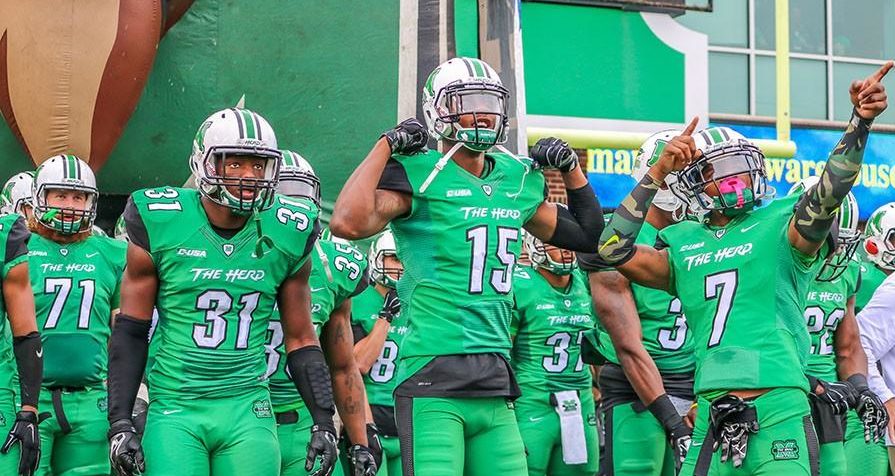Marshall University Teams up with Athlete Intelligence to Minimize Head-Impacts in Football
A Data Driven Approach to Improve Athlete Head-Safety in Contact Sports
Two professors from Marshall University, Dr. Zach Garrett and Dr. Suzanne Konz, have teamed up with Athlete Intelligence to show the safety effects of Rugby style tackling in football. Over the years, Coaches have begun to adopt new techniques that promote safer tackling by removing the athletes head from contact and instead leading with your shoulder. The goal of this partnership is help show the decrease of higher impact hits and overall decrease of head impact exposure workloads.
As part of the study, athletes from the football and rugby team will be wearing either the VECTOR MouthGuard or CUE Sport Sensor in order to capture practice and game head impact data. Each device will collect the quantity, location, and severity of each head-impact sustained then provide a team overview of head impact reports by position and athlete.
“Studies like this are always exciting,” says Andrew Golden, Director of Business Operations for Athlete Intelligence. “The theory makes perfect sense, less head contact equates to a reduced risk of head related injuries. But to see that validated in studies brings it to a new level of coaching and re-coaching your athletes.
In its second year, their study has already found the rugby style tackling can decrease the force impact and therefore reduce the risk of concussion in athletes.
“One of the big take-home’s is you’ve got to get your head out of the way,” Dr. Garrett said. “Two, is actually tackle somebody. Wrap them up and you’re going to create a lower threshold hit to yourself and even to the person that you’re hitting.”
By using the VECTOR MouthGuard and CUE Sport Sensor, Konz and Garrett can gather on-field data allowing them to see the location, severity, and count of each impact sustained by the athletes.
Being able to know which athletes were taking crown of head-impacts or those who had bad tendencies in their technique, it became fascinating to see how some athletes had actually changed their tackling habits based on the data that was being collected.
“I thought that was really intriguing,” Dr. Garrett adds, “Some of them found out they were using their head a lot and changed the way they used it over time.”
A link to the original article can be found, here
__
Want to learn more about Athlete Intelligence?
About Athlete Intelligence
Athlete Intelligence is a leading sports wearable technology and data analytics company located in Kirkland, Washington. Through a variety of wearable sensor options, Athlete Intelligence provides teams the ability to track the location, count, and severity of each impact allowing teams to use the data to improve athlete technique, manage head-impact exposure, and reduce the risk of injury. For more information on Athlete Intelligence, please visit: www.AthleteIntelligence.com
